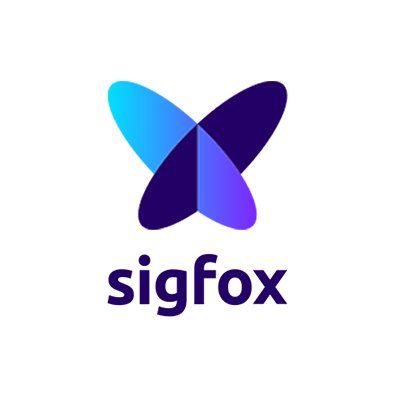
IoT Technology Showdown
Get ready for the ultimate IoT Tech Rumble: a high-stakes showdown where six cutting-edge wireless communication technologies battle for supremacy in the Internet of Things arena! Witness the power of Sigfox, NB-IoT, LTE-M, RPMA, Wi-SUN, and LoRaWAN as they flex their muscles, showcasing their unique capabilities in range, data rates, power consumption, and application suitability.
LoRaWAN

LoRaWAN (Long Range Wide Area Network) is a wireless communication technology specifically designed for low-power, long-range connectivity in Internet of Things (IoT) applications. Based on the LoRa modulation technique, it employs Chirp Spread Spectrum (CSS) technology, which enables it to provide low data rates ranging from 0.3 kbps to 50 kbps. LoRaWAN is characterized by its star-of-stars network topology, allowing for a simple and robust architecture that enhances network efficiency.
The technology boasts a long range of up to 15 km in rural areas and 5 km in urban areas, making it ideal for wide-area IoT deployments. With its low power consumption, devices connected to a LoRaWAN network can have extended battery life, lasting several years. LoRaWAN is best suited for applications requiring infrequent data transmissions, long battery life, and large-scale deployment, such as smart agriculture, environmental monitoring, and asset tracking.
- Based on LoRa modulation technology
- Chirp Spread Spectrum (CSS) technology
- Low data rates (0.3 kbps to 50 kbps)
- Long range (up to 15 km in rural areas and 5 km in urban areas)
- Star-of-stars topology
- Low power consumption
- Ideal for IoT applications requiring low data rates and long battery life
NB-IoT

NB-IoT (Narrowband IoT) is a wireless communication technology standardized by 3GPP, specifically designed for low-power, wide-area networks (LPWAN) and Internet of Things (IoT) applications. It operates within a narrow bandwidth of 200 kHz, enabling low data rates of up to 250 kbps while maintaining low power consumption.
NB-IoT offers a long range of up to 10-15 km and is designed for deep indoor penetration, making it ideal for static or low-mobility devices in various environments. As a cellular-based technology, it leverages existing LTE infrastructure, providing reliable and secure connectivity with wide area network coverage.
With its low power consumption and support for a large number of devices, NB-IoT is well-suited for a wide range of IoT applications, such as smart metering, asset tracking, smart agriculture, and environmental monitoring, where infrequent data transmissions and long battery life are crucial.
- Standardized by 3GPP (LTE-based)
- Narrowband technology (200 kHz bandwidth)
- Low data rates (up to 250 kbps)
- Long range (up to 10-15 km)
- Wide area cellular network topology
- Designed for deep indoor penetration and low power consumption
- Ideal for static or low-mobility devices and low-latency applications
LTE-M

LTE-M (LTE Cat-M1) is a wireless communication technology standardized by 3GPP, designed for low-power, wide-area networks (LPWAN) and Internet of Things (IoT) applications. As an extension of the existing LTE infrastructure, it offers higher data rates of up to 1 Mbps within a 1.4 MHz bandwidth, providing more capacity for IoT devices compared to other LPWAN technologies.
With a range similar to NB-IoT (around 10-15 km), LTE-M provides wide area cellular network coverage and is capable of supporting voice, mobility, and low-latency applications. Although it has higher power consumption compared to NB-IoT, it still allows for extended battery life in many IoT devices.
LTE-M is well-suited for a variety of IoT applications, including wearables, smart metering, asset tracking, and remote monitoring, where higher data rates, real-time communication, or voice capabilities are essential. Its versatility and compatibility with existing cellular infrastructure make it an attractive option for IoT deployments.
- Standardized by 3GPP (LTE-based)
- Broadband technology (1.4 MHz bandwidth)
- Higher data rates (up to 1 Mbps)
- Range similar to NB-IoT
- Wide area cellular network topology
- Supports voice, mobility, and low-latency applications
- Higher power consumption compared to NB-IoT
Sigfox

Sigfox is a proprietary wireless communication technology specifically designed for low-power, wide-area networks (LPWAN) and Internet of Things (IoT) applications. Utilizing ultra-narrowband (UNB) technology, it enables devices to communicate over long distances with minimal power consumption. Sigfox offers a low data rate of 100 bps, making it ideal for small, infrequent data transmissions.
The technology provides a range of up to 50 km in rural areas and 10 km in urban areas, employing a star network topology for efficient and simple connectivity. With low device costs and power consumption, Sigfox is well-suited for applications requiring long battery life and minimal data exchange, such as smart metering, asset tracking, and environmental monitoring. As a global IoT network provider, Sigfox operates in various countries, offering seamless connectivity for IoT devices worldwide.
- Proprietary technology
- Ultra-narrowband (UNB) technology
- Low data rates (100 bps)
- Long range (up to 50 km in rural areas and 10 km in urban areas)
- Star topology
- Low device cost and low power consumption
- Best suited for small, infrequent data transmissions


